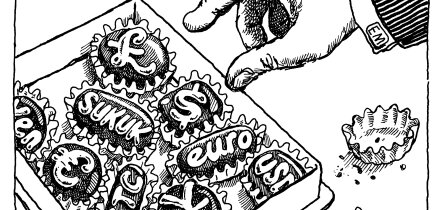Risk management plays a crucial role in upholding the stability of the financial system, and hence the accuracy with which risk is managed. The improvement of current market risk techniques is therefore of paramount importance, especially to companies that are active in the derivatives market. The quality of the forecasts of standard Value-at-Risk techniques depends crucially on the assumption made regarding the distribution of expected returns. In practise the assumption of normality is typically used for simplicity, however, this can lead to huge estimation errors for fat-tailed distributions.
In order to cope with the fat tails in the return distribution of financial assets, so that we can capture the risk involved with extreme market movements, we have recently developed an alternative parametric approach which is much better able to capture the risk of extreme returns: Var-X. This method models the left (negative return) tail of the expected return distribution, fitted using the tail of the Student-t distribution. Any additional tail fatness is captured when parameterising the Student-t distribution according to its degrees of freedom. In contrast with the normal distribution, which is parameterised only by its mean and standard deviation, Var-X requires one extra parameter estimate: the amount of tail fatness. Recent advances in Extreme Value Theory (EVT) mean that the amount of tail fatness can be estimated correctly without having to resort to the use of extremely large samples of data (in the past more than 10,000 observations where required in order to provide accurate estimators of the tail fatness). Indeed the unavailability of such large data sets for many financial assets, and the high computation time rendered the approach unattractive. Var-X however implements a recently estimated estimator that has been shown to produce good estimates of tail fatness even in small samples of financial asset returns.
In contrast with the assumption of normality, Var-X exhibits three important advantages. The first is the direct focus on the left tail. Any apparent skewedness in the distribution of asset returns will not violate any assumption on symmetry, as is the case with the normal distribution. The second is the direct implementation of a parameter reflecting the degree of tail fatness. The third advantage is the good small sample performance so that estimates may be obtained which reflect the current situation in financial markets, which can of course be adopted into both an unconditional and conditional approach.
Since Var-X generates larger estimates of the Value-at-Risk for assets with a higher probability of more extreme negative returns, it is a method of particular practical importance. This can be shown in the following out-of-sample tests. Taking for example $100 million in either U.S. stocks and bonds. The Var forecast for the next two weeks at the 99% level is calculated on a daily basis using data from the previous year. This forecast is then compared with the actual loss or profit made over the following two-week period. We calculated failure rates of the Var-X model, giving the percentage of times that the Var estimate is exceeded. At the 99% level the Value-at-Risk estimate should only be exceeded 1% of the time. We conducted forecasting tests using the various Value-at-Risk approaches for the following stock indices: the S&P 500 Index, the FTSE Index, the German DAX 30 Index and the French CAC 40 Index, and the U.S. Government Bond Index. The failure rates using the parametric-normal and the Var-X approaches are compared to the empirical Var estimates and to the theoretical values. From our results we observe enormous differences between the bi-weekly Var forecasts based on the normal distribution and the forecasts based on Var-X. For the S&P 500 failure rates are respectively 2.20% (empirical distribution), 2.00% (normal distribution) and 0.94% (Var-X method) relative to the 1% theoretical benchmark. The Var-X forecast on the S&P 500 is almost identical to the theoretical rate. The failure rates for the FTSE stock index show a similar pattern. For this index we calculated rates of respectively 2.10% (empirical distribution), 2.62% (normal distribution) and 1.36% (Var-X method). The Value-at-Risk forecasts for all the stock indices are on average exceeded twice as often as they should be. We find that this error is much lower for the forecasts made using Var-X. Our Var-X method also performs better than the empirical distribution, and furthermore has the advantage of being a parametric approach. The incorporation of the tail fatness explicitly in the Var-X thus generates Var estimates that are far closer to the 1% theoretical failure rate and thus fits the actual tails of the asset's return much better. The fatter the tail, the bigger the improvement from using Var-X.
Many financial assets are known to have distributions with much more frequent negative returns than suggested by the normal distribution. The scope for a parametric approach to estimating Value-at-Risk, which captures this financial asset characteristic (Var-X) and the possibilities to improve current risk management techniques seem very large.
This week's Learning Curve was written by Dr. Ronald Huisman, Assistant Professor of Finance; Dr. Kees Koedijk, Professor of Finance; and Rachel Pownall, PhD student in risk management at Erasmus University Rotterdam.





